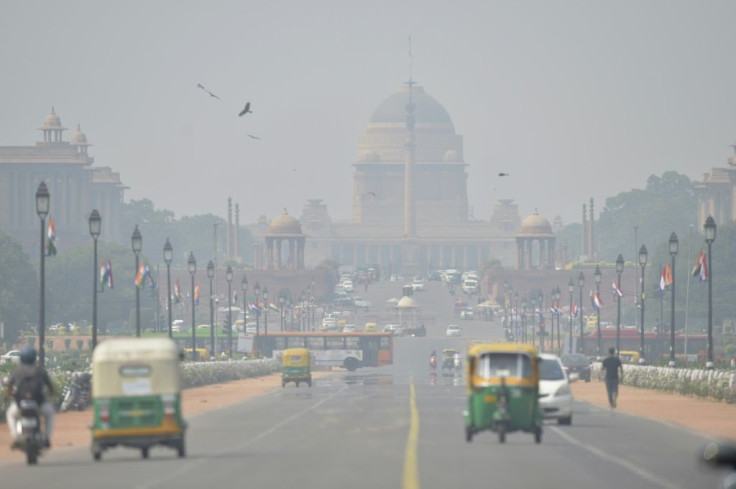3 Indian Cities In World's 10 Most Polluted List After Diwali Celebrations

KEY POINTS
- India's capital New Delhi was in the "hazardous" category after residents defied the firecracker ban
- It has become a characteristic feature of new Delhi to see air quality levels plunge during this time of the year
- The temple city of Ayodhya also set a new world record with the most number of earthen lamps lit at the same time
Three Indian cities were among the 10 most polluted cities in the world Monday morning after residents across the country celebrated Diwali -- the Hindu festival of light -- with firecrackers and lamps.
India's national capital of New Delhi, which has been making a regular appearance on the list the last few days, was joined by the cities of Kolkata and Mumbai. The top spot for the most polluted city in India as well as the world was occupied by New Delhi. Sitting in the "hazardous" category, New Delhi's air quality was at 420 Monday morning, according to Swiss group IQAir.
Mumbai took up the sixth spot with an AQI of 157, while Kolkata was in the seventh position with an AQI of 154.
Despite a ban on fireworks in New Delhi, residents burst crackers late into Sunday night and woke up Monday to smoky skies. New Delhi has been covered in a toxic blanket of gray smog for days as the capital region sees air quality plunge during this time of year. Masks are back, schools have shut, construction work has been brought to a halt and polluting vehicles have been banned as authorities try to get the severe air pollution levels under control.
"Even though Delhi has bent the longer term pollution curve, the levels are still high and that gets trapped due to cold and calm conditions in winter. Meeting clean air standards will therefore require speed and a deeper scale of change not only in Delhi but also across the larger region to make a difference," Anumita Roy Chowdhury, Executive Director at Centre for Science and Environment, New Delhi, told International Business Times.
While New Delhi tops the list of the world's most polluted cities especially during the winter, financial capital Mumbai and Kolkata in eastern India also appeared on the list following Diwali celebrations.
"To curb severe smog episodes during winter in Delhi and other Indian cities, more sustained and round the year action is needed to scale up infrastructure and system level solutions for clean energy transition in industries, transport and household sectors; mobility transition to reduce cars in cities; and close the loop around waste streams to prevent burning," Chowdhury added. "Unlike the Northern countries, where action and investments could be spread over 50 years to reduce air pollution, India will have to leapfrog within a much shorter time frame."
Amidst air pollution concerns soaring in India, streets and homes across the South Asian country were studded with bright earthen oil lamps by Hindu devotees, for whom the festival of light signifies the triumph of light over darkness.
The temple city of Ayodhya, which is believed to be the birthplace of one of the most important deities in Hinduism, also set a new Guinness World Record this Diwali for the most number of earthen lamps lit.
More than 2.22 million lamps were lit and kept burning for 45 minutes at the banks of the Saryu River on Saturday, beating last year's record of more than 1.5 million earthen lamps.
© Copyright IBTimes 2024. All rights reserved.






















